Collectors today know that fakes are all over the hobby, and that you always need to be on the lookout for them, especially when dealing with high-end cards. That's one of the reasons grading services have become so popular. But this wasn't the case in the early days of the organized hobby, when the idea of a fake baseball card never would have occurred to anybody. This was mainly because virtually no cards were worth enough to make it worth a counterfeiter's time and effort. Also, when advanced collectors bought or traded cards, it was either with people they knew, or through the mail with the buyer writing a check. I've read through a lot of hobby publications from the 1950s and 1960s, and I've never seen any references to fake cards, or people worrying about fakes.
This changed in the 1970s, once the hobby became more organized and prices began rising substantially. It was inevitable that fake cards were going to enter the hobby at some point, as the economic incentives started getting greater. I can't claim to know for sure when the first fake baseball cards were made, but the first instance of fakery to become widely known in the hobby happened in the spring of 1972. Rich Egan, one of the leading researchers on prewar baseball card sets over the previous decade, reported on the situation in the May 1972 issue of The Ballcard Collector (#80), in the two articles below. An antique dealer named Janet Hellein in Newark, Delaware had been writing to prominent collectors listed in Who's Who in Card Collecting, offering Old Judges and several more obscure sets for sale. She had apparently failed to deliver many of the cards people had bought from her, leading to an investigation by the U.S. Postal Service and the FBI, and some of the cards she did deliver were counterfeit, according to Egan. They included fake Old Judges, Home Run Kisses, D350-1 Standard Biscuit cards, and Henry A. Johnson cards.
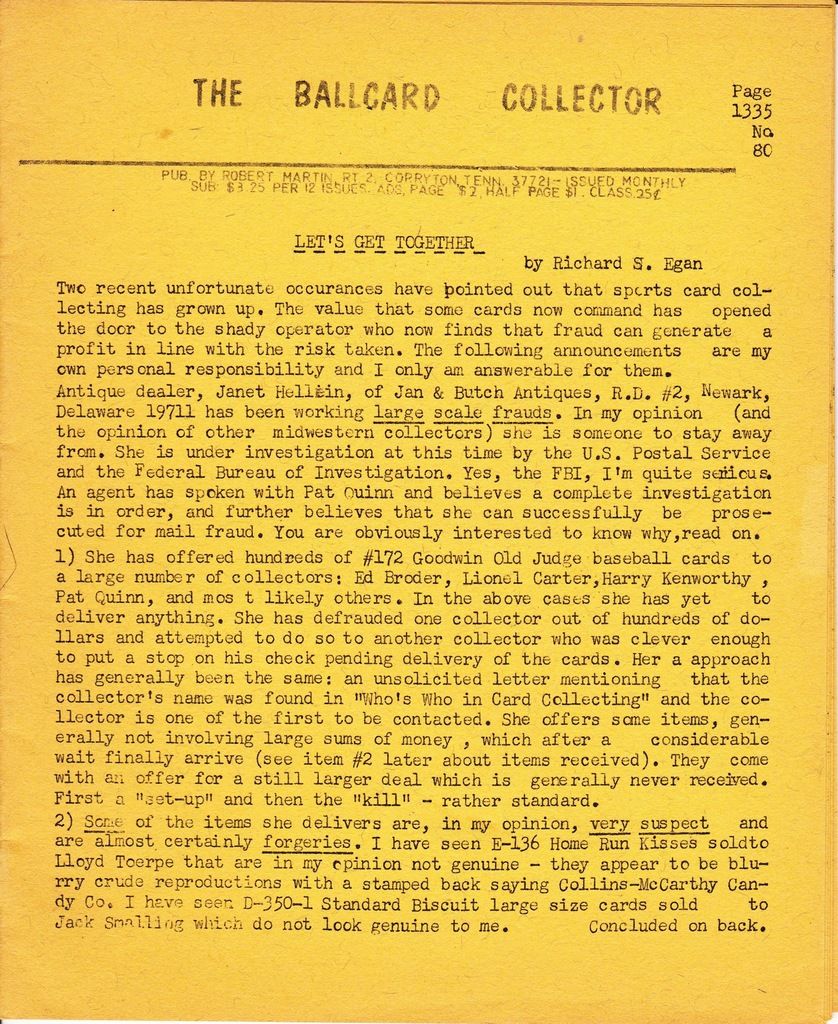
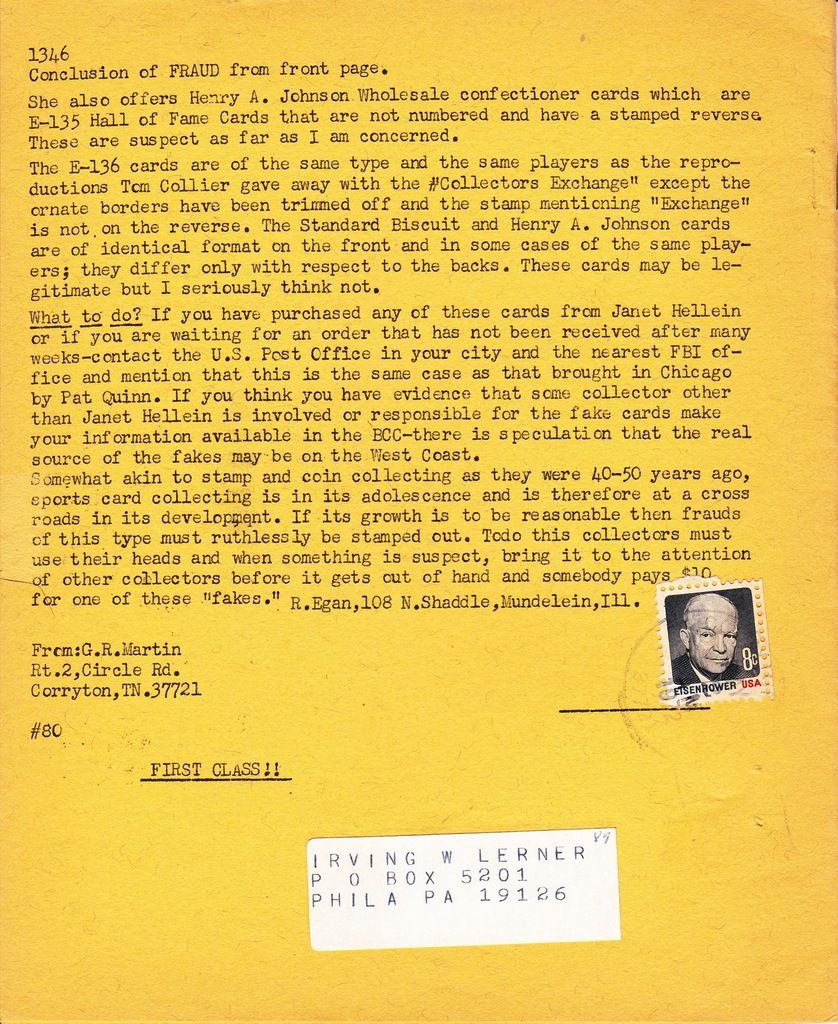
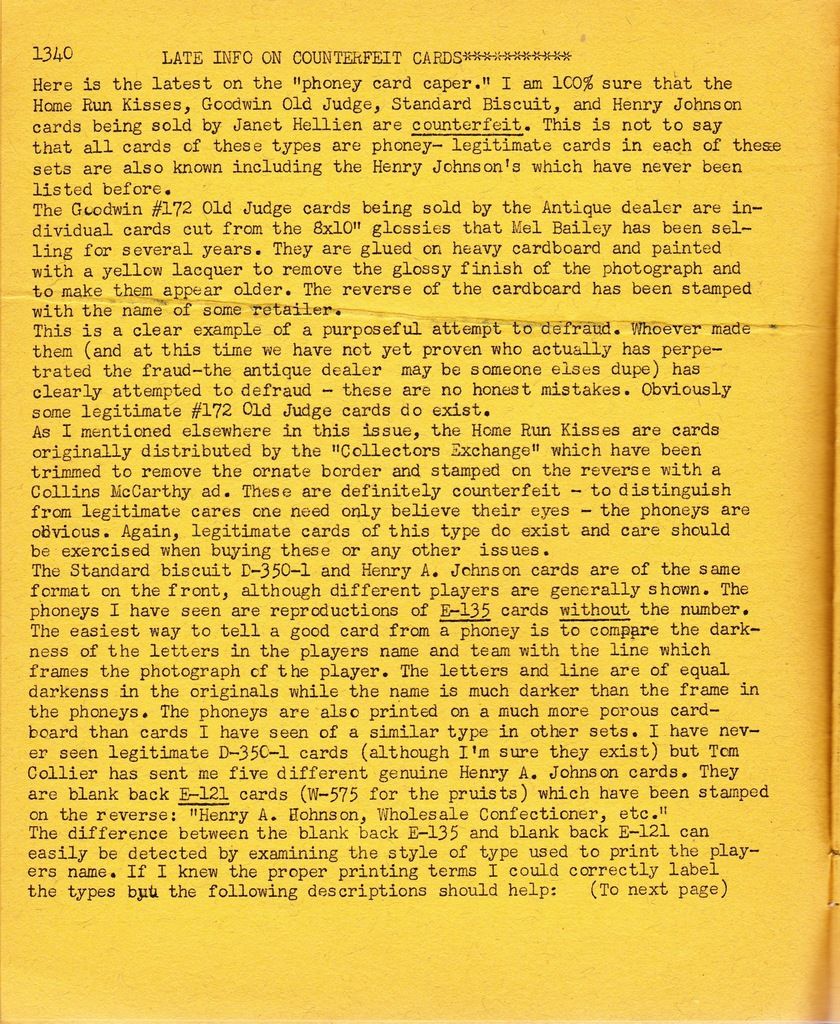
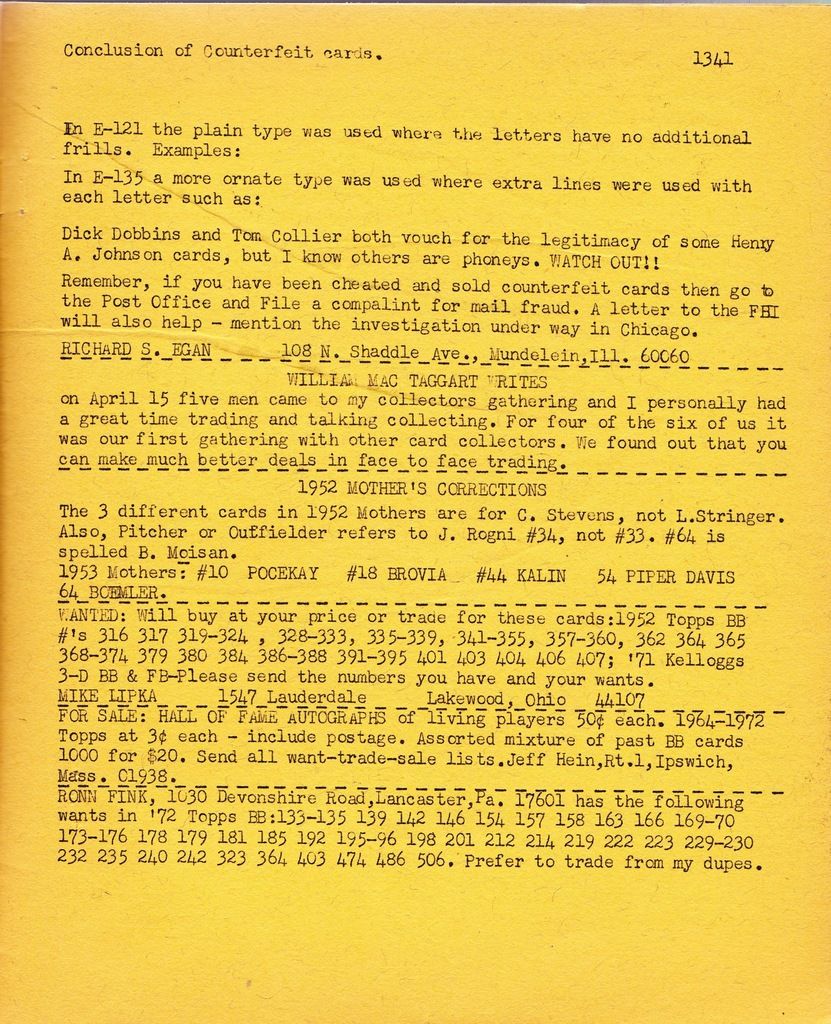
The fake Old Judges were made from glossy photographic prints that collector Mel Bailey had been selling, made from the 8"x10" photos of Old Judges (24 to a sheet) that Goodwin & Company had deposited in the Library of Congress for copyright purposes, as described by Bailey in this article from the April 1970 Trader Speaks:
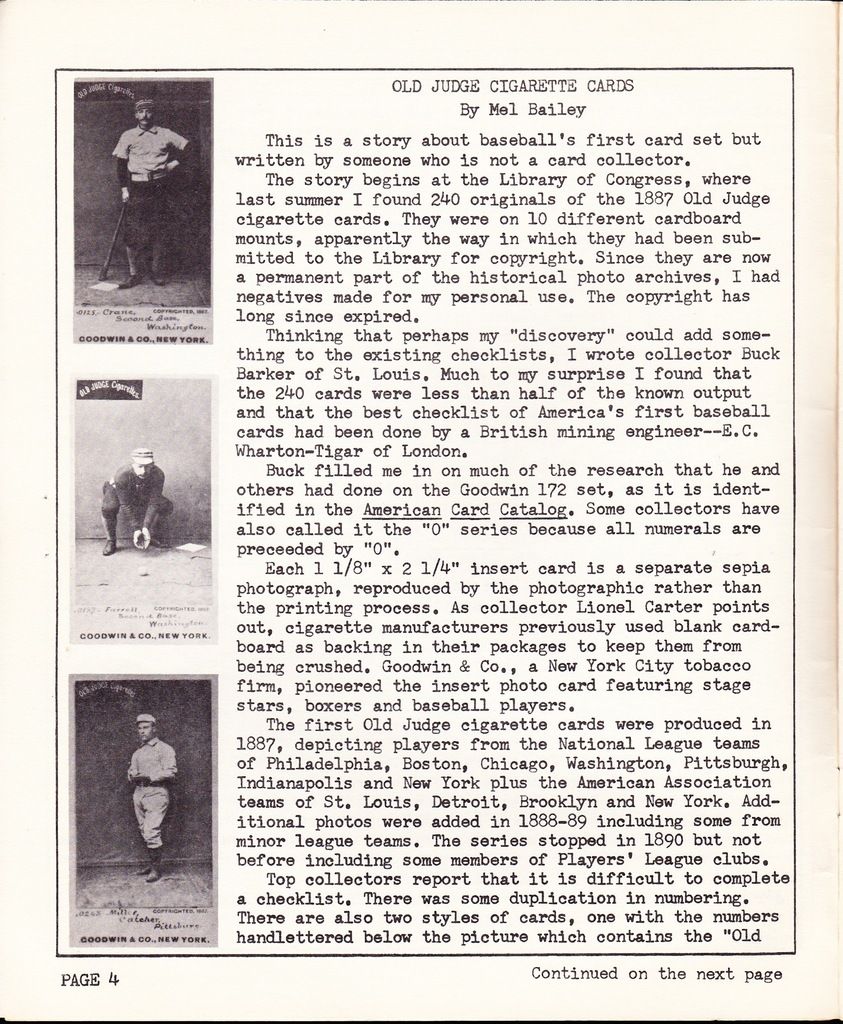
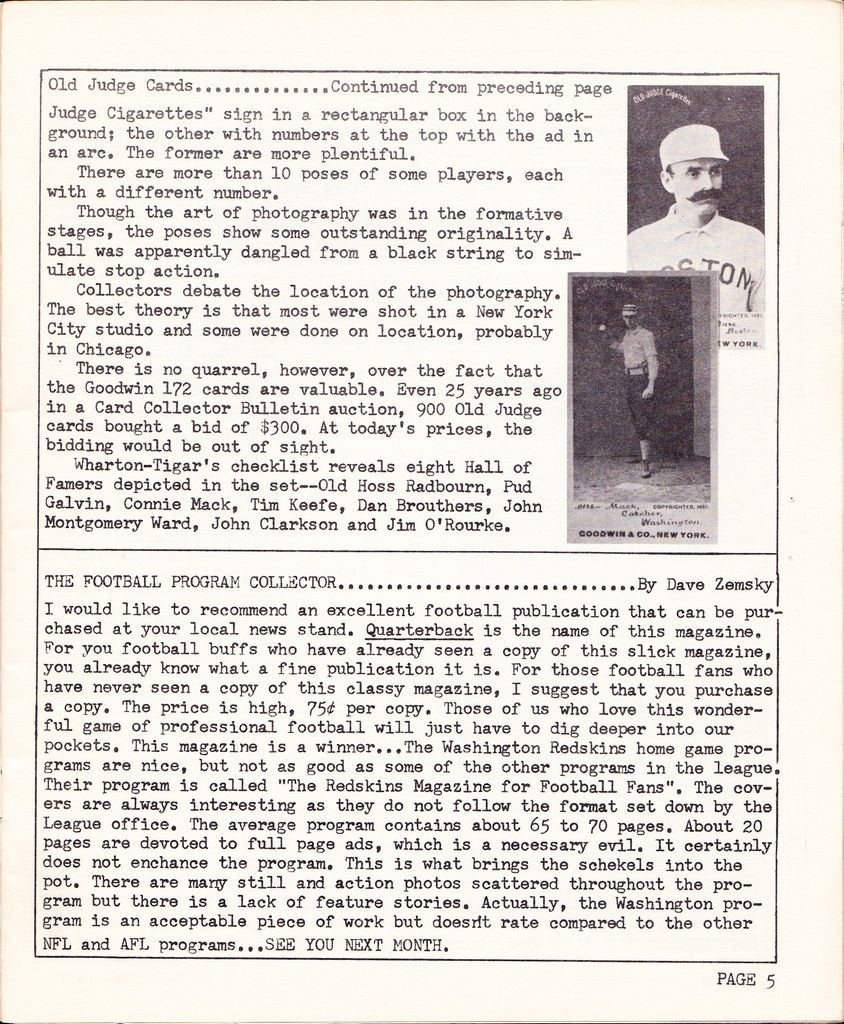
In the next issue of The Ballcard Collector (#81, June 1972), Wirt Gammon mentioned the scandal at the beginning of his front-page column, including "the possibility that some day some party will try to print fakes of the scarcest baseball cards". He expressed confidence that "a man experienced in handling old cards will be able to tell the difference", thus presaging grading services. In another article inside the same issue, Egan gave more details about the counterfeit Henry Johnson cards, which he had determined were TCMA reprints without the reprint notice on the back -- the beginning of the now-common practice of removing such notices from reprint cards and passing them off as genuine.
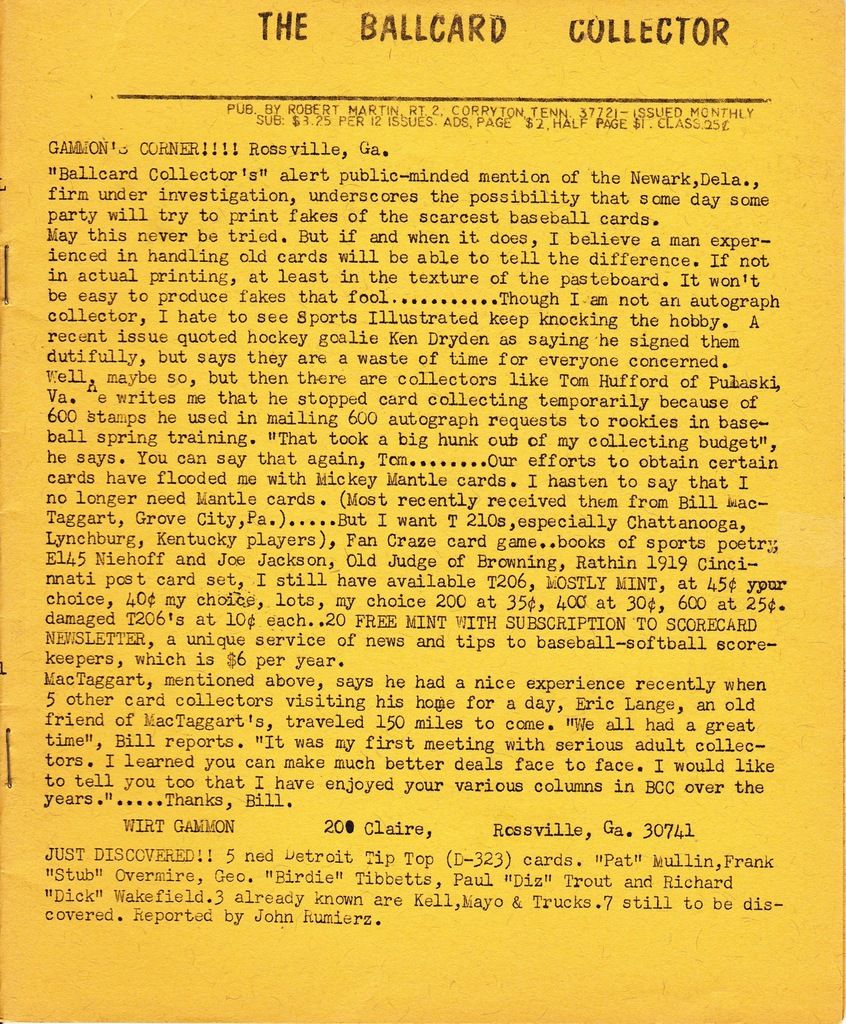
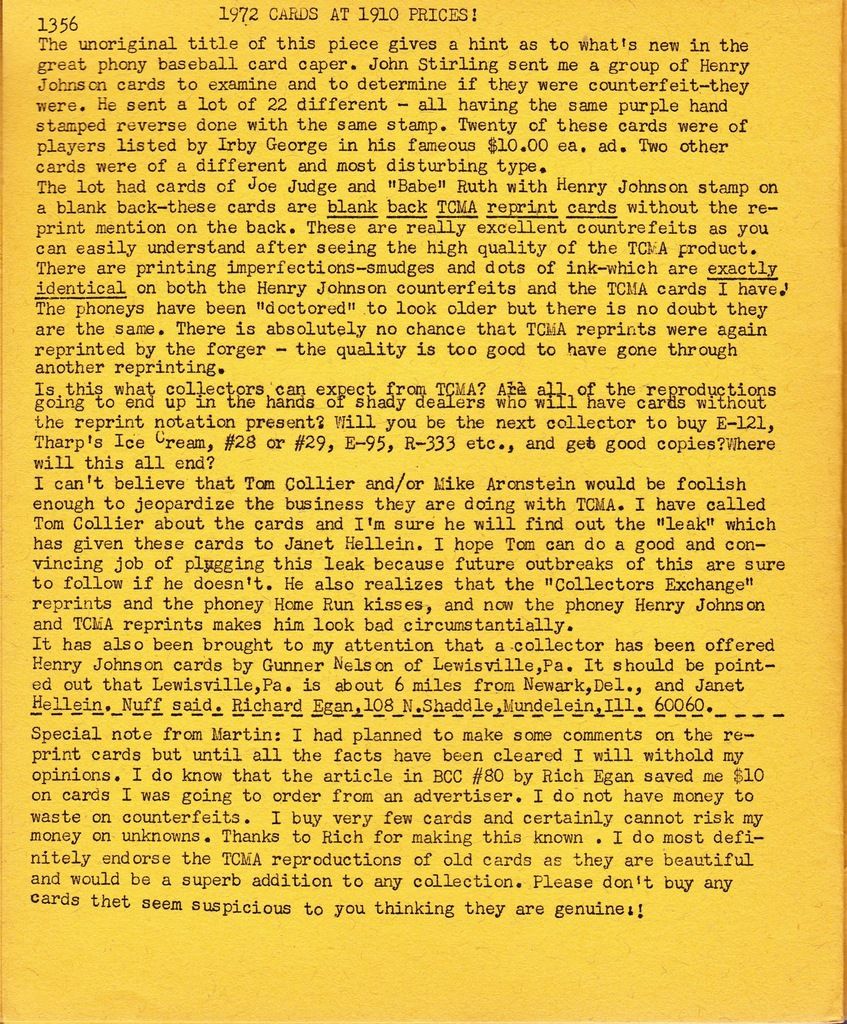
In the September 1972 Ballcard Collector, West Coast collector Jim Nowell reported that fake Zeenut, Remar Bread, and Sommer & Kaufman cards had been sighted. It's not clear whether these came from Janet Hellein, but my guess is that they came from somebody on the West Coast.

Finally, in the February 1973 Ballcard Collector (#92), Egan reported that some of the fake D350-1 and Henry Johnson cards had shown up in Charles Bray's auction in Card Collector's Bulletin, the beginning of the practice of auction houses being snookered by fakes:

All these fakes were undoubtedly very crude by current standards, but the hobby was a lot less sophisticated then. It wasn't long before the fakers would get more sophisticated, but that's a matter for another post.